The Google Pixel C Review
by Brandon Chester & Joshua Ho on January 25, 2016 8:00 AM ESTDisplay Analysis
At the launch event for their new Nexus phones and the Pixel C, Google made a point of advertising the Pixel C’s display as a 2560x1800 panel with a 500nit brightness, a 1.422 aspect ratio, and a low-temperature polycrystalline silicon (LTPS) backplane. The use of LTPS doesn’t have a direct impact on the user as far as display accuracy is concerned, but it can help to lower power usage and increase brightness by reducing the size of light-blocking circuitry. This can also lead to longer battery life by reducing display power, as the backlights don’t need to be pushed to as high of a brightness.
The Pixel C’s aspect ratio is a very interesting choice. While one can consider the 4:3 aspect ratio of the iPad to be fairly close to a digitized sheet of 11 x 8.5” paper, the fact that most of the world uses A series paper which has a square root of two 2 aspect ratio makes the Pixel C especially well-suited for displaying those documents. It’s a wider aspect ratio than what you get with a 4:3 display, but not as wide as the one on a 16:10 Android tablet, and slightly less wide than Microsoft’s Surface Tablets which have a 3:2 aspect ratio. However, the Pixel C is still wide enough that you’re clearly intended to use it in a landscape orientation. Landscape doesn’t lend itself well to the majority of Android apps that just throw up a big phone UI and call it a day, and I feel that it may have been a mistake on Google’s part. A future update to enable split-screen multitasking may change things here, but for now you’re stuck with an interface and applications that just don’t feel at home on a display of these proportions.
Something that I felt worth noting about the Pixel C was how reflective the glass appears to be. While we don’t have a test for the exact reflectivity of a display, it’s something that can be fairly well gauged just by using the device and making comparative observations to other devices. All of the Android tablets I review are clearly more reflective than the latest iPads due to the lack of anti-reflective coatings, but the Pixel C really stands out for its high reflectance. I’ve had a number of issues using the Pixel C due to reflections making it impossible to see what’s on the screen, which means that I have to increase the brightness to compensate. This subsequently reduces the battery life because it increases the power consumed by the display. While Google is able to overcome these issues due to their high brightness, utilizing an anti-reflective coating to allow for visibility even with a low brightness allows for better real-world battery life.
In addition to fairly basic specifications like brightness, resolution, and aspect ratio, a display has many other aspects relating to color accuracy. On mobile platforms, a display must target the sRGB color standard to accurately render the content that one will find on the web, and through all video streaming and photo sharing services. To evaluate a display’s accuracy relative to the sRGB standard we run it through our custom display workflow, using an X-Rite i1Pro 2 spectrophotometer and i1Display Pro colorimeter along with SpectraCal’s CalMAN 5 software for collecting and managing the data.

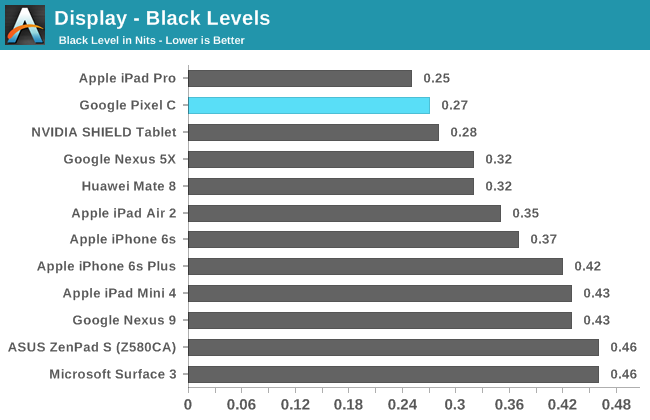
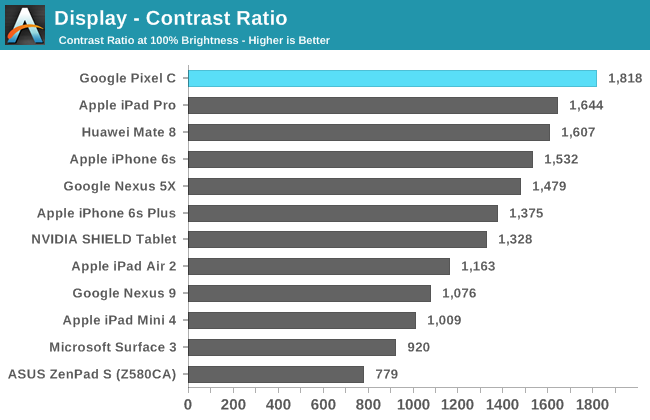
The Pixel C’s display goes up to 495 nits measured at the center of the display, and so Google was quite accurate in their advertisement of 500nits. This is the brightest tablet on record, beating the Nexus 9 by around 25 nits. As I mentioned earlier, the highly reflective glass makes the high brightness levels quite necessary, which will likely end up impacting the real-world battery life that Pixel C owners see. It’s also worth noting that the touch sensor layer is highly visible when light shines on the display, which makes it even more difficult to use outdoors or with overhead lighting. This is something that I’ve only seen managed well on Samsung and Apple devices, and for a flagship Android tablet with a completely custom display I expect better in this regard than what the Pixel C delivers.
In addition to the high brightness, the Pixel C has quite deep black levels for an LCD tablet. With a black level of 0.2718 nits and a contrast ratio of 1818 at max brightness, the Pixel C has the best contrast of any tablet that we’ve seen to date, besting even the iPad Pro.
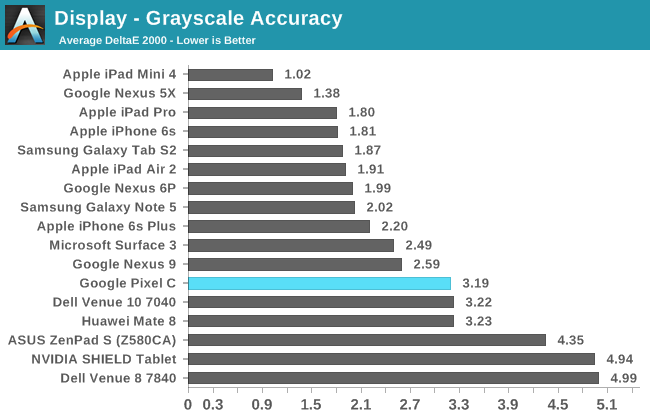
Greyscale accuracy on the Pixel C is fairly good, with a DeltaE error value slightly over the motion-visible value of 3. The error is mostly due to the green component of luminance dropping as you move from black to white. While we certainly have been spoiled by the rapid increase in mobile display quality over the last few years, I do think that Google could have pushed color accuracy higher here. That isn’t to say that I think the Pixel C will disappoint, but considering that it’s an entirely custom panel on a premium device that won’t be shipping in high volume, I think Google could have gone a bit further. Competition is getting fairly fierce in this category, with devices pushing for DeltaE values below 2, and some units achieving values below 1 which would make the error impossible for the eye to detect in any circumstance. In the end, the Pixel C’s greyscale accuracy is quite good, but it’s not the absolute best that I’ve seen.

The Pixel C’s accuracy with rendering primary and secondary color saturations is excellent. With an average DeltaE value below 2, I doubt any person will find themselves bothered by what little inaccuracy there is. The only color that actually exhibits an error above 3 is 100% red, with the remaining values all sitting below.
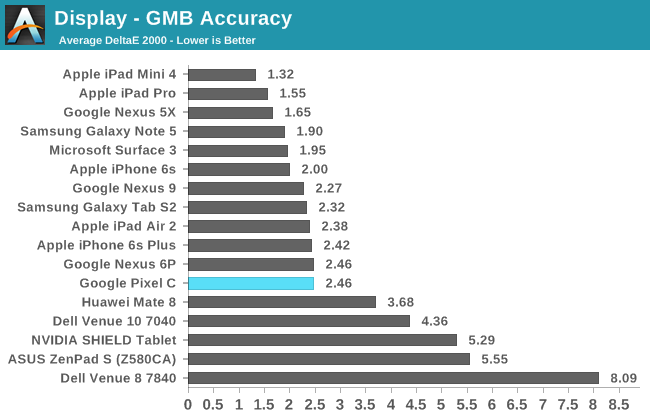
The Pixel C does quite well in the Gretag-MacBeth ColorChecker test. The average error is below 3, with the only outliers being color mixtures that primarily have a blue component, along with the greyscale values that are included in the test. Most other colors have DeltaE values somewhere between 1 and 2, and with that kind of accuracy I don’t really have any complaints, even if it’s not the absolute best result that I’ve ever seen.
In the end, the Pixel C comes with a bright, accurate, and high resolution display, with one of the highest contrast ratios that I’ve seen on a tablet. Google could definitely improve greyscale performance a little, and all companies need to start applying the same sort of anti-reflective coatings that Apple applies to their iPads, because the difference in outdoor usability is dramatic when you compare them. The Pixel C’s high reflectivity has been a noticeable obstacle when using it in environments that have overhead lighting, which includes my own home. That kind of little detail is the sort of thing that, when properly recognized and addressed, can really take a product to the next level. As it is, the Pixel C’s display is very good in many respects, but among high end tablets it’s not one I can call the absolute best.



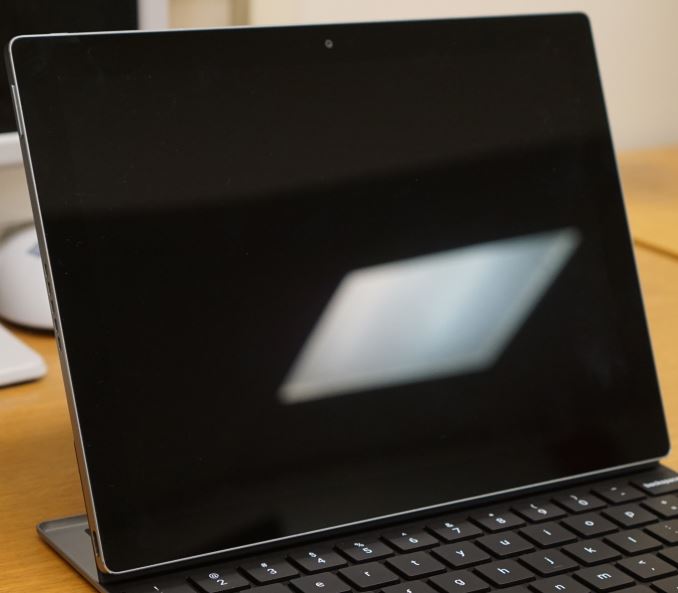
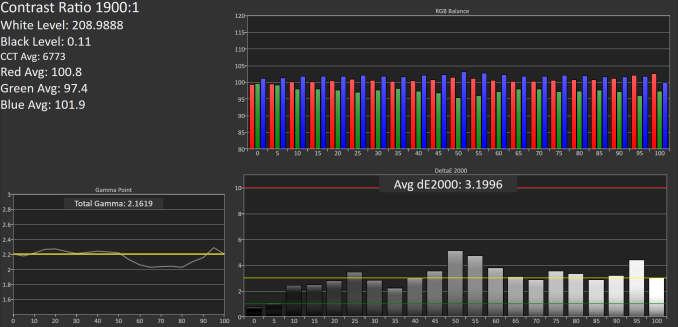

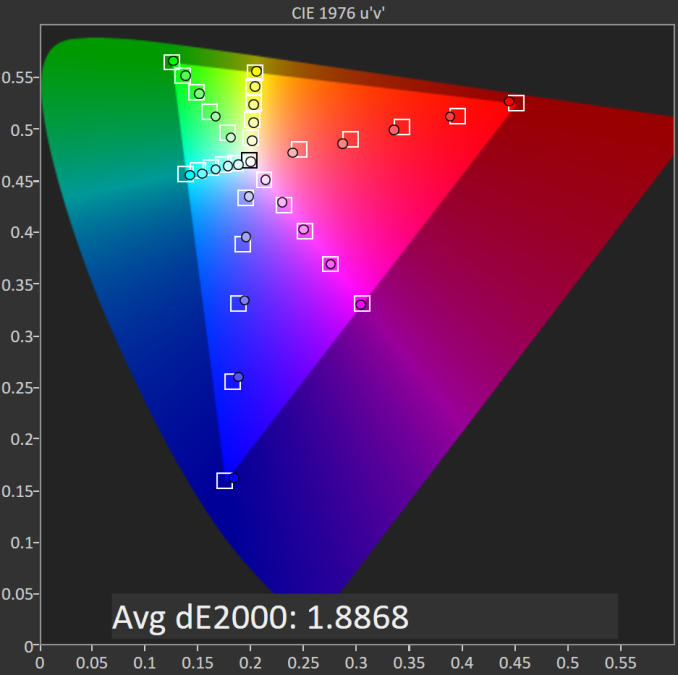









122 Comments
View All Comments
ImSpartacus - Wednesday, January 27, 2016 - link
You're paying for something that "just works". You'd be surprised at how attractive that is for a lot of people that are simply incapable of using modern tech.So you can either stick your fingers in your ears and demand that everyone spend years of their life becoming experts in modern tech, or you can realize that there's some money to be made. Apple is in the business of making money.
Alexey291 - Saturday, January 30, 2016 - link
No offence to your and your expertness. But do you honestly think that it takes "a few years" to become an expert of playing with touchscreen devices?Oh boy...
jbelkin - Monday, January 25, 2016 - link
Well, not ignorant, just an economy that only supports 9% of buyers being able to afford the stnadard bearer.Vlad_Da_Great - Tuesday, January 26, 2016 - link
@jbelkin. EU are not as shallow and easy to manipulate as their USA counterparts. Also, biggest % of iPhone purchases in USA are done from people over 60y old. If you look around the globe the second biggest country with huge engineering population (India) has no interest in the iPhone.Asians on the other side love magic, that is what APPL is good of selling.
vanilla_gorilla - Tuesday, January 26, 2016 - link
That's mostly related to income. The vast majority of those people would much prefer an Apple device if they could afford it. Most Android devices are incredible cheap devices.the_comment_guy - Tuesday, January 26, 2016 - link
What are you talking about? Apple hasn't been ableto open stores in India due to their laws requiring 30% of their components to be sourced from small to medium enterprises: that's why they've barely made a dent in the Indian phone market. Despite this, Apple's sales in India have been increasing every year. If India relaxes its backwards laws, and Apple is allowed to open their own stores, Apple sales will explode.Alexey291 - Saturday, January 30, 2016 - link
Sure the sales have grown in india. Shame about the sales in the rest of the world.Essentially last quarter's sales have been propped up by the Chinese and Indian sales growth. The rest of the world however...
akdj - Thursday, February 4, 2016 - link
Rest of the world? As in North, South America and a dozen European countries? Apple's BLOWN their OWN records out of the water with iOS device sales. iPads are down ...unfortunately for Apple, they're built too well! Seriously, as I've owned each iPad ...we use them with our business and both original and iPad 2s are still BOTH working & battery life on the first iPad continues beating a dozen hours watching movies. Eight browsing or a good 25-30 listening to music, screen off!My iPad '2' purchased on launch day and the kids use it all the time. No issues ...they're replied amid don't die. Apple is continuing support for older devices. Kicking their own selves in the sack! Or ...maybe not.
While geeks like me justify with my job, personal business and personal 'wants' the purchase of each new iPad that drops, and because of each gen's phenomenal updates. iPad 3 aside, which I owned until 4 dropped - iPad 3 left on Craigslist the following day with its updated performance so obvious. The 'new' iPad 3, IMHO, is the only anomaly to the updates and performance increases, display/resolution updates, shaving weight, maintaining battery life and dramatically boosting its 'guts', sensors, display accuracy and smaller but significant user bonuses like the A/G display stack and their lamination & out of factory calibration ....make each iPad, in my line of work, play & education priceless! Original to iPad 2, the difference was/is obvious. 2-->3, 'Retina' on the iPad, a complete game changer. Oops, same engine as the iPad 2, 4 times the resolution, drop the 4 with its Apple designed SoC monster A8X --- exponentially bettering the iPad w/Retina experience!
While somewhat less Ferrari, more Subaru ...Air 1 is today a fantastic tablet (I've both Air 1 & 2). It's slower than its younger sibling but its sporting the first 64bit processor in a tablet and mine continues to get a lot usage. My Air 2, there's nothing on the market comparable. Not w/the App Store and its million optimized, all inclusive app/software accompanying options to aggregate and integrate with the home Mac, studio Macs or your phone/tab with Handoff. The continuity Apple's built into iOS and OS X as well as supporting older devices with both desk OS's, it's no wonder folks aren't replacing them as quickly as a phone! They're still selling a quarter more than the rest of the field does in a year! When you take the <$149 tablet choices off the table, iPad in its slump is outselling the entire industry 2-1 quarter vs. year! It's a top 100 in the Forbes 500 business itself! That's crazy IMHO. But the addition of iPad Pro changes things. Doubling the RAM on the iPhone 6s & iPad Air 2 was obvious in use, day to day ...it was just a LOT quicker at everything than my Air 1. They've now doubled to 4GB in iPP and as an owner for 3 months, I've never been happier with an iPad. The iPad A2 still ROCKS! I use it daily and it's as robust and reliable as any predecessor, just a helluva lot faster and finally now, finally being targeted by developers to take advantage of the hardware...as older products are phased out
Which left me curious about Josh's final comment/words
'Overall, I’m not even sure this measures up to the iPad Air 2 which is well over a year old by this point. I cannot in good conscience recommend anyone buy this tablet until the touch screen issues and generally poor performance has been resolved, and even then that recommendation would be to a limited group of people solely interested in a touch-only Android tablet.A
I read the review a second time all the way through. I went back and read the Air 2 review as well. While a couple of benchmarks seem to have parity or even exceed A2's --- the display performance, also beating A2, it's close in your measurements but EVERY other word strongly suggests not just an inferior experience in comparison (Pixel v A2), but performance destroyed by my iPad 4! Janky, unable to maintain connection, freezes and crashes and.... I can go on, it's not necessary though. Just seems to very much understate iPad A2's performance and without reading the rest, complete overstatement of the 'experience' of PixC as a couple of benches close, neck & neck, means absolutely nothing when it comes down to the user's overall experience. My iPad 2 seems to be a better comparison!
Yikes
lilmoe - Monday, January 25, 2016 - link
Nice ignorant comment bro. Way to go.id4andrei - Monday, January 25, 2016 - link
Hardware has nothing to do with Android's problem. Dev support for tablet operation in Android is lacking. Simple.